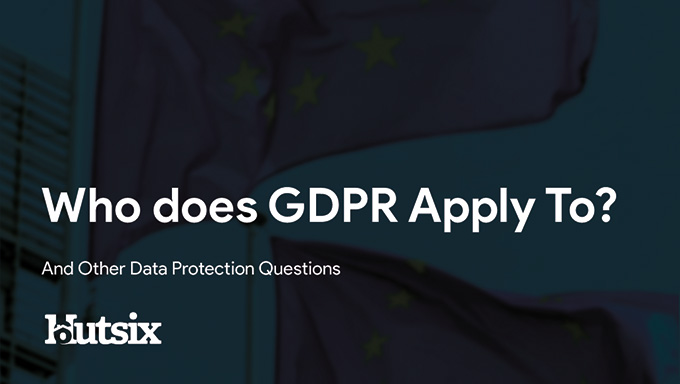AI and the Future of Spear Phishing
In 2024, the integration of AI into cybercrime has reached unprecedented levels, raising the question: How will AI change spear phishing?
In this article, we'll explore the intersection of AI and spear phishing, examining how malicious actors leverage advanced AI capabilities to orchestrate more targeted and convincing attacks. From personalised content generation to automated response handling, we'll delve into the tactics employed by cybercriminals and discuss strategies to bolster our defences against these evolving threats.
Join us as we navigate the murky waters of AI-powered spear phishing and seek to safeguard our digital realm against its pernicious influence.
Looking for the right security training for your organisation?
Talk to one of our experts about effective training now.
Understanding Spear Phishing
Simply put, spear phishing is a type of cyber-attack in which attackers tailor their phishing attempts to specific individuals or organisations.
Unlike traditional phishing, which casts a wide net, spear phishing involves personalised messages that appear more authentic to the target.
Spear phishing attacks rely on social engineering tactics and often includes deceptive links or attachments designed to steal sensitive information or compromise systems.
What is an Example of Spear Phishing?
Imagine you work for a large financial institution called "FinanceX." One morning, you receive an email from what appears to be your company's IT department. The email states that due to a recent security breach, all employees are required to reset their passwords immediately to safeguard sensitive information. The email provides a link to a webpage where you can supposedly reset your password.
Initial Contact: You receive an email with the subject line: "Urgent: Security Alert - Password Reset Required." The email address appears to be from "it_support@financex.com," and the message seems legitimate, addressing you by your first name and citing recent security concerns.
Sense of Urgency: The email creates a sense of urgency by stating that failure to reset your password promptly could result in account suspension or further security breaches. This urgency can make you more likely to act without carefully scrutinising the email's authenticity.
Phishing Link: The email contains a hyperlink labelled "Reset Password Now." Hovering over the link reveals a URL that appears to be legitimate, leading to a webpage that mimics FinanceX's login portal. However, upon closer inspection, the URL is slightly misspelled (e.g., "fimancex.com" instead of "financex.com"), indicating that it's a phishing attempt.
Fake Login Page: Clicking on the link takes you to a convincing replica of FinanceX's login page. The page prompts you to enter your username and current password, followed by a field to input a new password. Unbeknownst to you, the attackers behind the phishing scam are collecting this information in real-time.
Data Theft: Once you enter your credentials and new password into the fake login page, the attackers harvest this sensitive information. They can then use these credentials to access your company's internal systems, steal confidential data, or launch further attacks within the organisation.
Case Study
In 2016, a sophisticated spear phishing attack targeted employees of the Democratic National Committee (DNC) during the U.S. presidential election campaign. Attackers sent phishing emails posing as legitimate entities, such as Google, urging recipients to change their passwords by clicking on a malicious link. This tactic led to the compromise of sensitive emails and data, which were later leaked online, impacting the election process and prompting widespread investigation into foreign interference.
This example highlights how spear phishing attacks can be highly targeted and damaging, exploiting human vulnerabilities to gain unauthorised access to sensitive information or systems. It underscores the importance of vigilance, employee training, and robust cybersecurity measures to combat such threats effectively.
AI Powered Spear Phishing
Integration of generative AI into various workflows is increasingly widespread, and spear phishing attacks are no exception to this trend. As technology evolves, malicious actors are leveraging advanced AI capabilities to orchestrate more sophisticated and targeted cyber threats. While the following examples shed light on this evolving landscape, it's important to note that not all potential scenarios have been observed in practice. Here are four ways in which AI models could potentially be exploited to facilitate spear phishing attacks:
Personalised Content Generation
AI models can generate highly personalised and convincing phishing emails by analysing vast amounts of data about potential targets. They can craft messages that appear legitimate, using information gleaned from social media profiles, past interactions, or leaked data.
Language Mimicry
Advanced language models can mimic the writing style and tone of specific individuals or organisations, making it difficult for recipients to discern whether an email is genuine or fraudulent. This level of sophistication can increase the effectiveness of spear phishing attacks.
Automated Response Handling
AI-powered chatbots or automated systems can engage with potential victims in real-time, responding to queries and building rapport to enhance the credibility of phishing attempts. These chatbots can even dynamically adjust their responses based on the victim's reactions.
URL Obfuscation and Detection Evasion
AI algorithms can be used to generate and obfuscate malicious URLs, making them more difficult for traditional security measures to detect. Conversely, attackers can also leverage AI to identify and exploit vulnerabilities in email security systems, allowing phishing emails to bypass filters and reach intended recipients.
3 Steps to Protect Against Evolving Spear Phishing Threats
Protecting against ever-evolving threats like AI-powered spear phishing requires a multifaceted approach that combines technological solutions, employee training, and proactive security measures. Here's how you can enhance your defences:
Step #1 Employee Training and Awareness: Educate employees about the risks of spear phishing and provide regular training on how to identify and report suspicious emails. Awareness programs should cover recognising phishing red flags, avoiding clicking on suspicious links or attachments, and understanding the importance of cybersecurity best practices.
Step #2 Email Security Solutions: Deploy robust email security solutions with advanced threat detection capabilities, including AI-powered algorithms that can identify and block suspicious emails before they reach users' inboxes. These solutions help prevent phishing emails from reaching employees and mitigate the risk of successful attacks.
Step #3 Phishing Simulations: Conduct regular phishing simulations to assess employees' susceptibility to phishing attacks and reinforce cybersecurity awareness. Simulations involve sending simulated phishing emails to employees and tracking their responses to identify areas for improvement and provide targeted training.
Security Awareness for your Organisation
Enjoyed our blog? Learn more about how Hut Six can help improve you security awareness with training and simulated phishing. Start a free trial now, or book a meeting with one of our experts.
Featured
What is the Impact of Security Awareness Training? - Hut Six
Discover the Impact of Security Awareness Training: Prevent breaches, foster culture, & build trust.
What is Personal Data?
Learn about personal data, its types, and significance in data protection. Explore general and special category data, as well as pseudonymised and anonymised data under the GDPR.
Who Does GDPR Apply To?
Who Does GDPR Apply To? And Other Data Protection Questions/ Information Security blog by Information security awareness provider Hut Six Security.
Does ChatGPT Pose a Cybersecurity Risk
In this blog post, we explore whether AI chatbots like ChatGPT pose a cybersecurity risk. We delve into the potential vulnerabilities and threats posed by chatbots, and discuss measures that can be taken to mitigate these risks. Read on to discover how you can ensure the security of your organisation's chatbot interactions.
How Do I Get Cyber Essentials Certified?
Learn how to obtain Cyber Essentials certification and enhance your organization's cybersecurity posture with our comprehensive guide. Our expert insights will help you navigate the certification process to meet the requirements for Cyber Essentials.
Essential Steps for Security Awareness Training
Starting a security awareness training campaign? Here are 5 essential steps to help ensure information security success.
Malicious Insider Threats - Meaning & Examples
Malicious insider threats can cause massive problems. Here we examine some of the motivations behind attacks and methods of detection organisations can use to reduce risk.
5 Biggest Breaches of 2022 (So Far)
Five of the biggest and most significant data breaches, hacks, and information security attacks of 2022 (so far).
Auditing for GDPR Compliance
Questions to consider when auditing your business or SME for General Data Protection Regulation (GDPR) compliance.
Improving Employee Cyber Security
With human error responsible for many breaches and attacks, we offer some helpful areas for improving employee security compliance.












